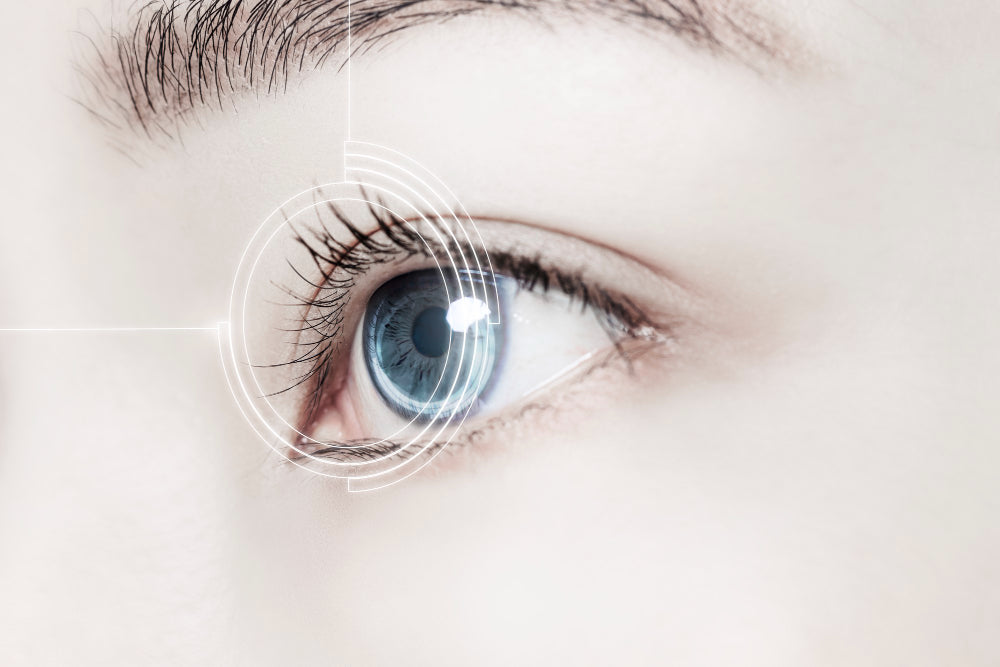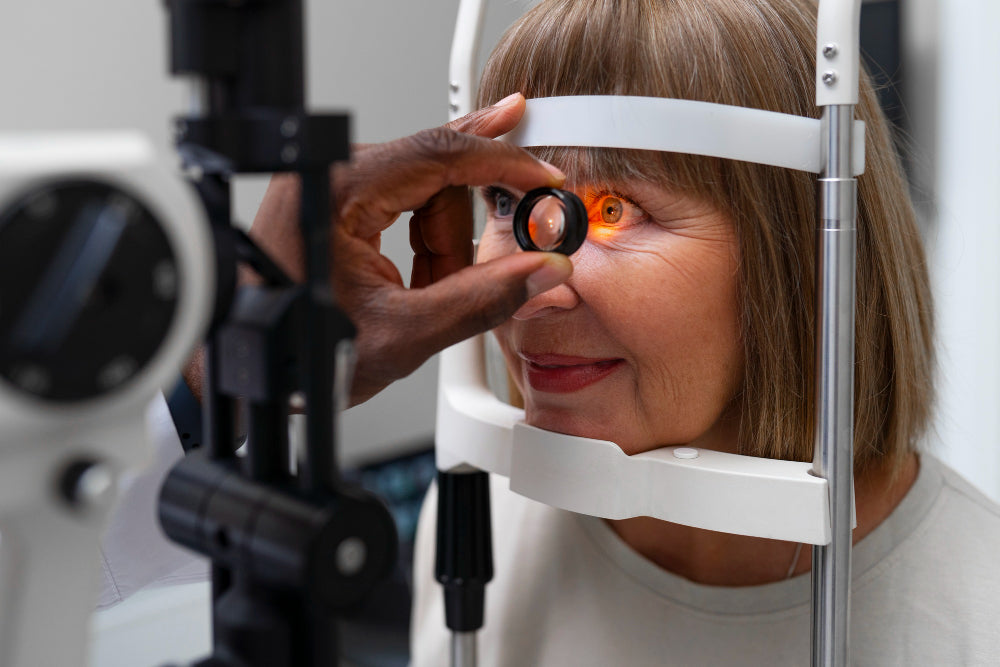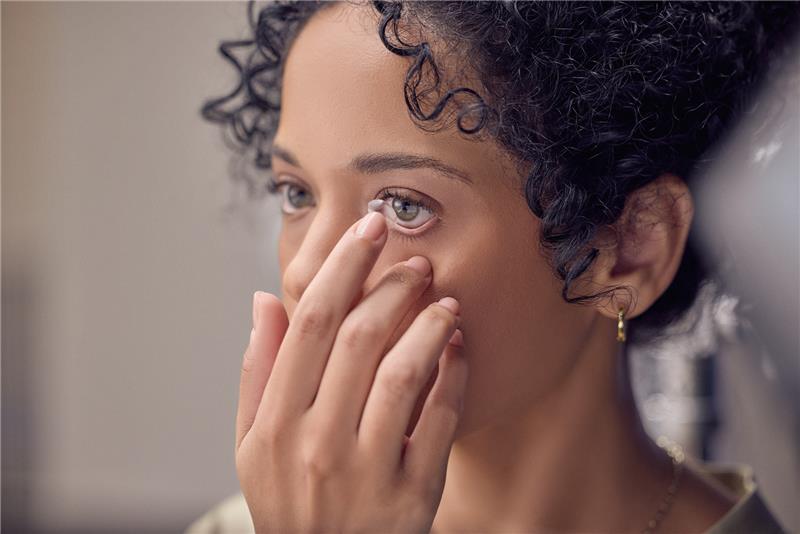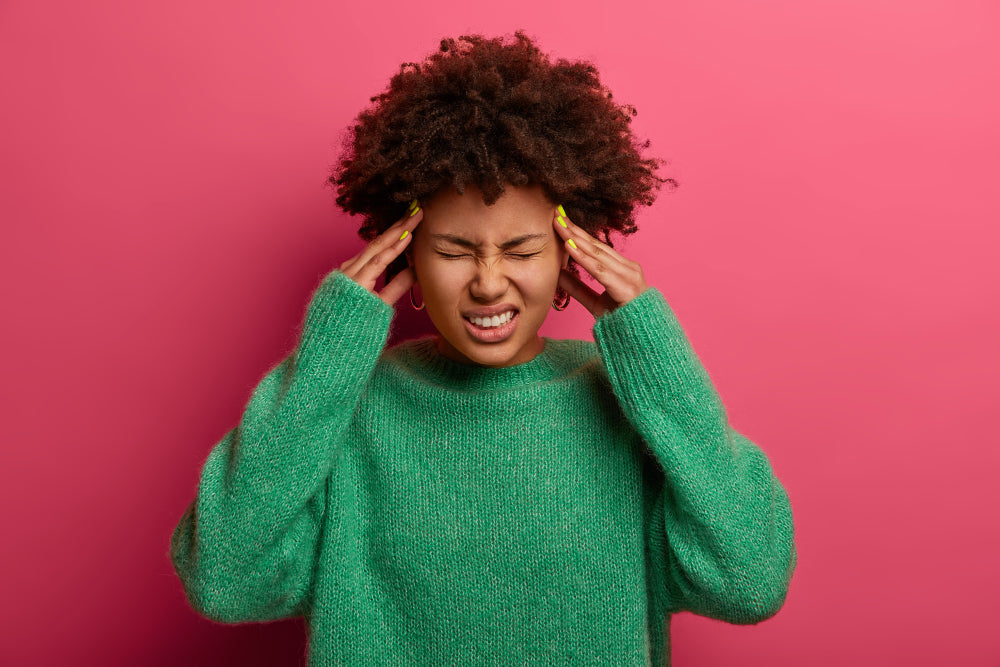Are you struggling to find the right contact lenses to meet both your near and far vision needs? Multifocal contact lenses might be just what you need to assist you in seeing better near and far in contact lenses. There are other options available, such as monovision contact lenses. And then some people just prefer to use glasses as needed over contact lenses, most commonly for reading although some people prefer distance lenses over the top of a computer contact lens fit. There are many options available!
In this blog, we'll dive into what multifocal lenses are, how they work, and everything you need to know before deciding if you want to give these lenses a try.
What Are Multifocal Contact Lenses?
Multifocal contact lenses are specialized lenses designed to help people with presbyopia, a condition in which the eye gradually loses its ability to focus on nearby objects with age. This usually starts around age 40 and becomes more pronounced with time.
These lenses are designed to provide better vision at multiple distances by incorporating different prescription powers into a single lens. Instead of relying on separate reading glasses for close-up tasks and distance contacts for far vision, multifocal contacts offer the convenience of seeing clearly at various distances without switching eyewear.
Before getting fitted for multifocal contact lenses, an optometrist will conduct a comprehensive contact lens exam to determine the right prescription, fit, and lens type for your eyes.
How Do Multifocal Lenses Work?
Multifocal contact lenses use a unique design incorporating several focal points to help you see clearly at varying distances. There are generally three main types of designs used in multifocal lenses:
-
Simultaneous Vision: In this design, different prescriptions are arranged to allow both near and far vision to be viewed simultaneously. Your brain naturally adjusts to focus on the appropriate distance based on what you're looking at.
-
Segmented Vision: These lenses have separate, distinct zones for near, intermediate, and far vision. They typically resemble the design of bifocal glasses, with each section of the lens dedicated to a specific range of vision.
-
Aspheric Design: This design gradually changes the curvature of the lens from the center to the edge, providing a smooth transition from near to far vision. It's one of the more advanced designs in modern multifocal contact lenses.
By blending multiple focal points, multifocal contacts allow you to perform various tasks, such as reading your phone or driving without switching lenses or relying on glasses. Many people assume their glasses prescription can be used for contacts, but contact lens prescriptions differ from glasses prescriptions in key ways, such as base curve and diameter. The powers vary too, depending on the prescription and type of lens fit.
Different Types of Multifocal Contact Lenses
Multifocal contact lenses come in various designs to suit different needs and preferences. They are primarily available in two types:
-
Soft Multifocal Contact Lenses: These lenses are made of a flexible material and provide comfort for all-day wear. They are the most popular choice for individuals seeking multifocal contacts.
-
Rigid Gas Permeable (RGP) Multifocal Lenses: These lenses are less flexible but offer clearer vision, especially for individuals with more complex vision correction needs. They can provide sharper focus at all distances but may take longer to adjust to.
One of the most essential factors in getting a comfortable fit for your multifocal contacts is the base curve of your lenses, which determines how well your contacts fit on your eyes and can also affect vision clarity.
Additionally, some brands offer single use options, allowing for better comfort and convenience, and others are designed specifically for dry eyes to enhance comfort.
At Vision Source Rio and Vision Source Heights, we provide a range of multifocal contact lenses tailored to your specific vision and lifestyle needs, ensuring you receive the best fit, clarity and convenience available.
How to Use Multifocal Contact Lenses
Using multifocal contact lenses is quite similar to regular contacts, but there are a few essential tips to ensure they work effectively for you:
-
Consult your Optometrist: Your optometrist will measure the front surface of your eyes as well as your distance and near prescriptions to ensure the best fit and vision from your multifocal contacts. There will also be a trial period involved, and changes from the original prescription may need to be made. Don’t worry, this is perfectly normal and part of the fitting process.
-
Practice Insertion and Removal: While the process is the same as inserting and removing regular contact lenses if you’re not switching modalities, getting comfortable inserting and removing your multifocal lenses is important, especially if you're new to contact lenses.
-
Follow the Wearing Schedule: Depending on the type of multifocal contacts you choose, they may be daily, weekly, or monthly lenses. Stick to the recommended schedule for cleaning and replacing your lenses to maintain eye health and best vision.
Multifocal lenses come in different wearing schedules, and choosing between daily and monthly contact lenses depends on your lifestyle, convenience, and eye health preferences.
Advantages of Multifocal Contact Lenses
Multifocal contacts come with several benefits that make them an excellent option for those needing vision correction for both near and far distances. Here are a few key advantages:
-
Convenience: Less switching between reading glasses and distance lenses. While multifocal contacts allow you to transition easier between near and distance tasks, there still may be certain circumstances where a thin pair of glasses can enhance your vision through long days of screen time or while driving at night.
-
Improved Appearance: Many people feel self-conscious wearing glasses, especially those needing them for near and far vision. Multifocal contacts provide a discreet solution for maintaining clear vision without sacrificing aesthetics.
-
Clearer Vision at Multiple Distances: Multifocal contacts can provide better vision at all distances, minimizing the need for multiple pairs of glasses.
Research indicates that approximately 75% of patients prefer multifocal lenses over monovision correction methods. Just in general, newer presbyopes tend to do better in multifocal contacts, while more established presbyopes often prefer monovision.
Drawbacks of Multifocal Contact Lenses
Of course, there are some drawbacks to multifocal contact lenses, as with any product. Here are a few things to keep in mind:
-
Adjustment Period: It can take some time to adjust to multifocal lenses, especially if you've been wearing traditional contacts or glasses for years.
-
Limited Availability for Some Prescriptions: Depending on prescription strength and other factors, multifocal lenses might not be suitable for all individuals.
-
Possible Visual Distortion: Some wearers report slight visual distortion or blurriness, particularly in low-light conditions or while driving at night.
-
Multifocals can definitely take longer to fit: than traditional contact lenses. It is normal to go through more changes of lenses during the fitting process.
Are Multifocal Contact Lenses Right for Me?
 Multifocal contact lenses might be a great option for people over 40 who experience presbyopia or who need both near and far vision correction. They can also be ideal for active people who prefer not to rely on reading glasses or bifocals.
Multifocal contact lenses might be a great option for people over 40 who experience presbyopia or who need both near and far vision correction. They can also be ideal for active people who prefer not to rely on reading glasses or bifocals.
However, if you are unsure whether multifocal contact lenses are right for you, it's always a good idea to schedule a consultation with an optometrist like the dedicated teams at Vision Source Rio and Vision Source Heights. Our experts assess your needs and recommend the best vision correction options to fit your unique lifestyle.
FAQs
1. Is there a trick to getting used to multifocal contacts?
The trick lies in how your brain adjusts to multiple focal points. The more you wear your multifocal contacts, the better your brain becomes at selecting the correct focal point for the task at hand.
2. Why can't I read with my multifocal contact lenses?
If you're having trouble reading with multifocal contacts, it’s quite possible that your prescription could use a little tweaking. It’s also possible that for your vision demands multifocal contact lenses aren’t the best choice for you. Visit with your optometrist to determine the best course of action moving forward.
3. How long does it take for eyes to adjust to multifocal contacts?
It may take your eyes a few days to a couple of weeks to adjust fully to multifocal contact lenses or a monovision fit. Patience and consistent use are key to a smooth transition.
Ready to Experience Clear Vision?

Vision Source Rio and Vision Source Heights offer expert eye care services, including multifocal contact lens fittings, that will help you see clearly and comfortably. Whether you're new to contacts or looking to switch to multifocal, our team is here to help. Book a consultation now at Vision Source Rio/Heights to find the best multifocal contact lenses for your vision needs.
Your enhanced vision is just one step away!





